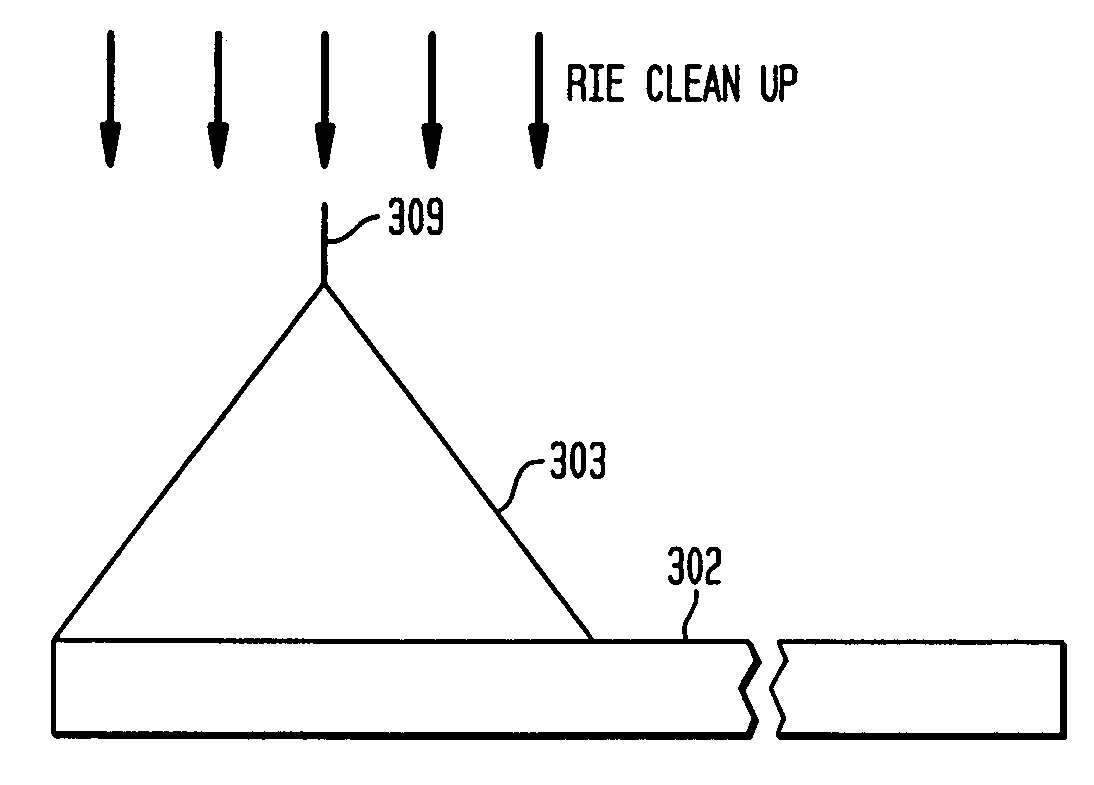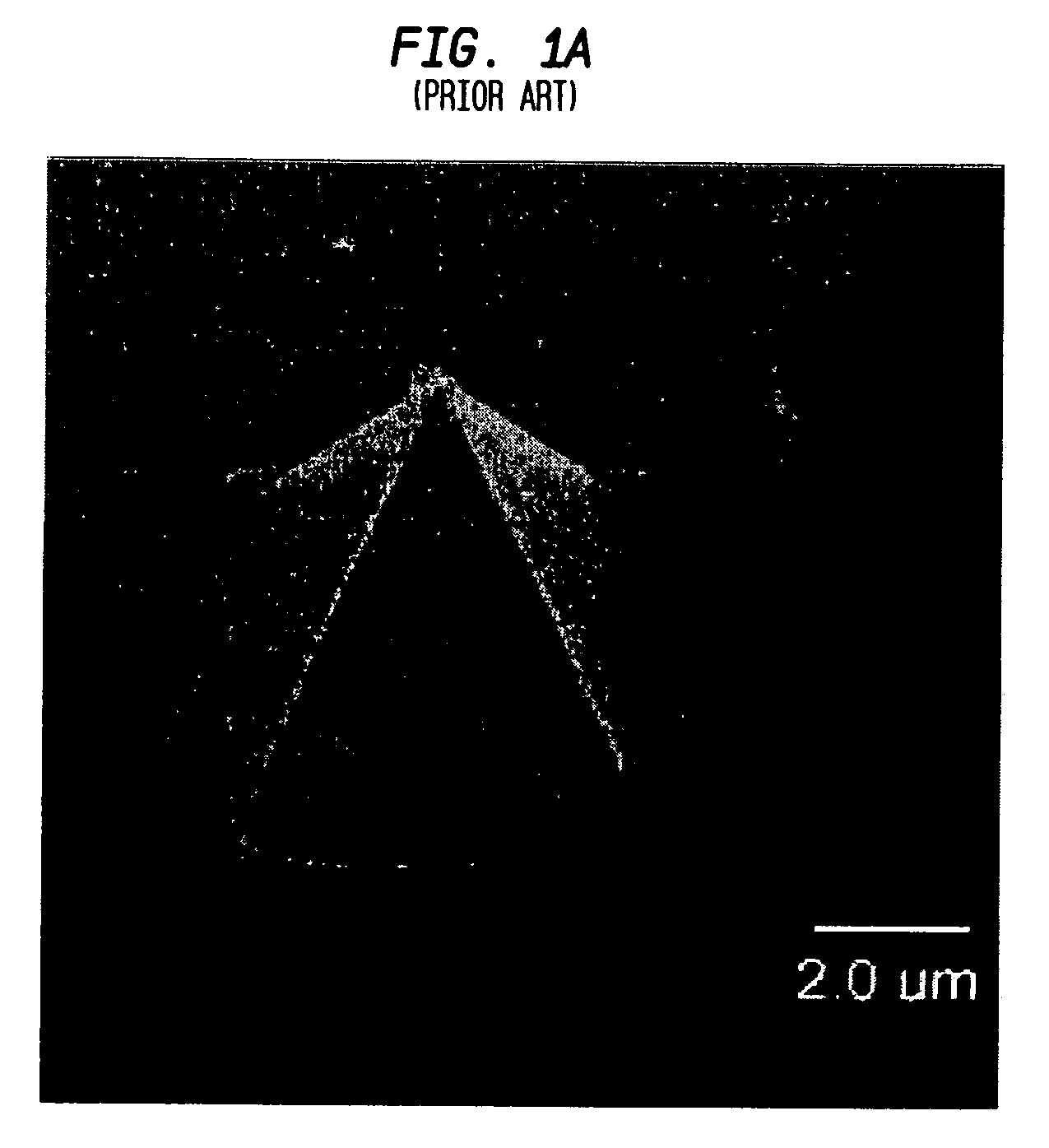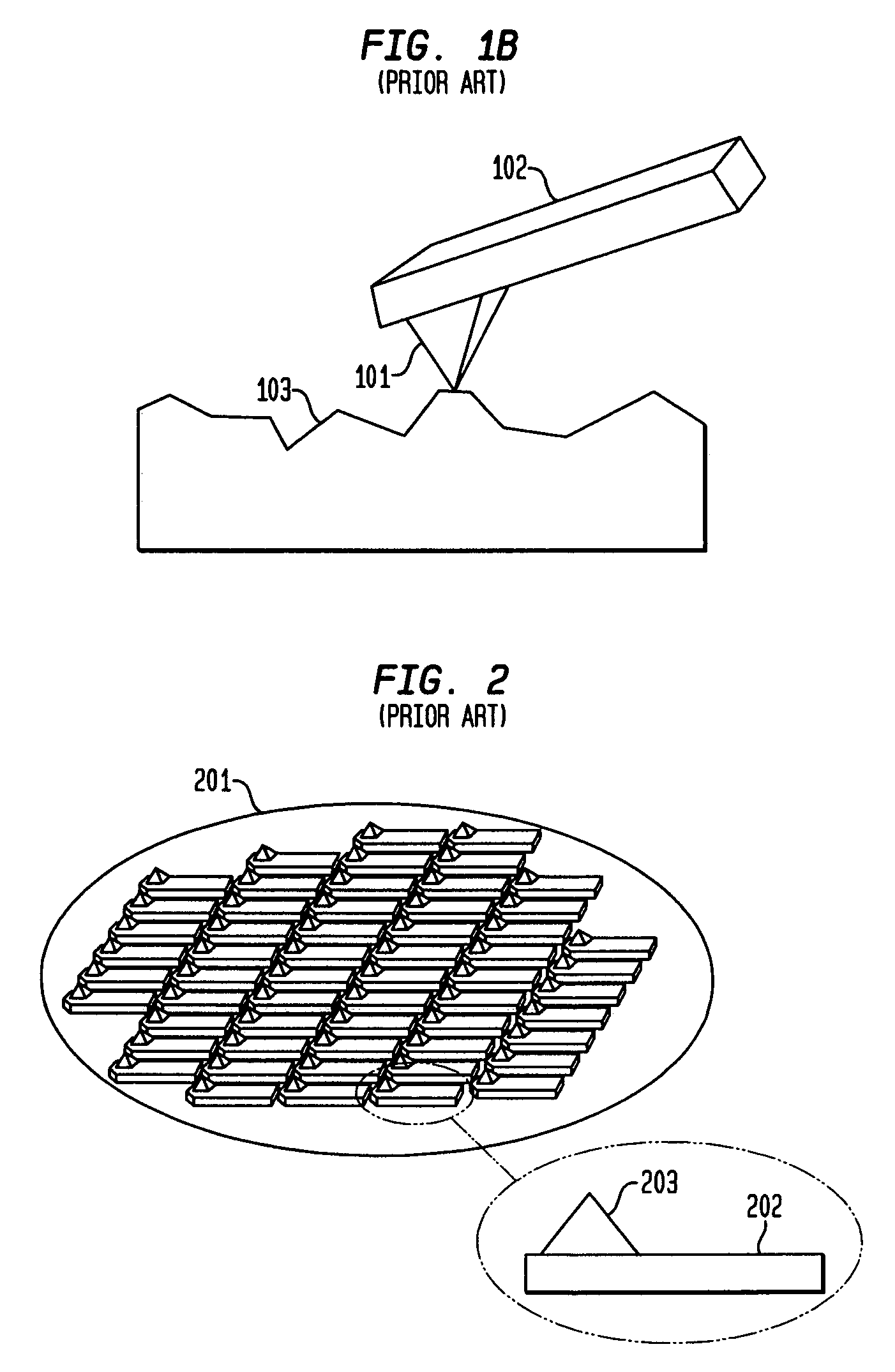Monolithic high aspect ratio nano-size scanning probe microscope (SPM) tip formed by nanowire growth
a scanning probe and nanowire technology, applied in the field of scanning microscope probes, can solve the problems similar to micro-machined afm tips, and achieve the effects of low cost of manufactured tips, easy growth, and reliability and durability advantages
- Summary
- Abstract
- Description
- Claims
- Application Information
AI Technical Summary
Benefits of technology
Problems solved by technology
Method used
Image
Examples
example
[0047] In this example, a micromachined silicon pyramid extended by a silicon nanowire using the method outlined in FIGS. 3A-3C was provided. Specifically, a silicon wafer was masked and etched in KOH to form silicon pyramids. The native oxide was removed by an HF dip and a 2 nm thick gold film was evaporated over the silicon pyramid. The wafer was then loaded into an UHV-CVD furnace. A pre-growth anneal at 500° C. in H2 ambient for 10 minutes was used to agglomerate the Au film into AuSi eutectic droplets. The furnace temperature was then lowered to the nanowire growth temperature of 420° C. Pure silane (SiH4) at a pressure of 2 torr was used as the precursor. FIGS. 6A-6B are SEM images showing a silicon pyramid following the growth. The typical length of the silicon nanowires is about 700 nm and their typical diameter is about 10-12 nm.
[0048] Following the growth the wafer was etched by RIE using CF4 chemistry. As can be seen in FIGS. 7A-7B the non-vertical nanowires are etched o...
PUM
| Property | Measurement | Unit |
|---|---|---|
| Diameter | aaaaa | aaaaa |
| Length | aaaaa | aaaaa |
| Electrical conductor | aaaaa | aaaaa |
Abstract
Description
Claims
Application Information
 Login to View More
Login to View More - R&D
- Intellectual Property
- Life Sciences
- Materials
- Tech Scout
- Unparalleled Data Quality
- Higher Quality Content
- 60% Fewer Hallucinations
Browse by: Latest US Patents, China's latest patents, Technical Efficacy Thesaurus, Application Domain, Technology Topic, Popular Technical Reports.
© 2025 PatSnap. All rights reserved.Legal|Privacy policy|Modern Slavery Act Transparency Statement|Sitemap|About US| Contact US: help@patsnap.com



